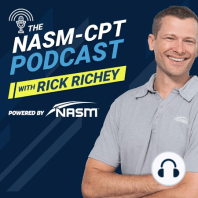21 min listen

Abdominal Hollowing v Abdominal Bracing
Abdominal Hollowing v Abdominal Bracing
ratings:
Length:
23 minutes
Released:
Sep 12, 2019
Format:
Podcast episode
Description
Abdominal hollowing (or the draw-in maneuver) and abdominal bracing are both incorporated by therapists, trainers, and other exercise specialists to benefit persons with lumbar instability (Vaičienė, Berškienė, Slapsinskaite, Mauricienė, & Razon, 2018). There is a tendency for professionals to pick one of these interventions while downplaying the validity and value of the other. Integrated training is based on the implementing all evidence that works during the appropriate time with an understanding of how we can optimize outcomes for our clients. We will review the research surrounding abdominal hollowing and abdominal bracing to provide a better understanding of the evidence of their practical applications.
Evidence shows that deep abdominal muscles are more activated with abdominal hollowing and surface muscles more activated with abdominal bracing (Vaičienė, Berškienė, Slapsinskaite, Mauricienė, & Razon, 2018). Hollowing has shown to increase local spinal stabilizers (Lee et al., 2013; Suehiro et al., 2014; Kim & Oh, 2015; Lee et al., 2016) and LPHC stability while minimizing the facilitation of global muscle activity during exercise (Suehiro et al., 2014; Kahlaee, Ghamkhar, & Arab, 2017). Abdominal hollowing was found superior to abdominal bracing for increasing LPHC stability and leg stiffness in hopping tasks (Dupeyron, Hertzog, Micallef, & Perrey, 2013). Though it does seem that maintaining a neutral spine (Reeve & Dilley, 2009) and costodiaphragmatic (chest / belly) breathing is important to the optimization of muscle activation while performing abdominal hollowing (Ha, Kwon, Kim, & Choung, 2014).
Multiple data questions the efficacy of treating LBP solely using abdominal hollowing (Unsgaard-Tondel et al., 2012; Vasseljen et al., 2012; Wong et al., 2013). McGill, arguably one of this generation’s top researchers on exercise and the spine, is not a fan of abdominal hollowing, and argues that the transverse abdominus should activate when abdominal bracing is done appropriately without the need to draw-in the navel (2016). He provides evidence that core stiffness is of far more value when it comes to protecting the back (Lee & McGill, 2015).
Evidence supporting both abdominal bracing and abdominal hollowing work to increase LPHC stabilization. We are not left with a debate on efficacy of these two techniques, but application. Which application should we employee and when?
Get 20% off your order now by calling 800-460-6276 or visiting NASM.org, and using the code Podcast 20.
--- Send in a voice message: https://anchor.fm/nasm-cpt/message
Evidence shows that deep abdominal muscles are more activated with abdominal hollowing and surface muscles more activated with abdominal bracing (Vaičienė, Berškienė, Slapsinskaite, Mauricienė, & Razon, 2018). Hollowing has shown to increase local spinal stabilizers (Lee et al., 2013; Suehiro et al., 2014; Kim & Oh, 2015; Lee et al., 2016) and LPHC stability while minimizing the facilitation of global muscle activity during exercise (Suehiro et al., 2014; Kahlaee, Ghamkhar, & Arab, 2017). Abdominal hollowing was found superior to abdominal bracing for increasing LPHC stability and leg stiffness in hopping tasks (Dupeyron, Hertzog, Micallef, & Perrey, 2013). Though it does seem that maintaining a neutral spine (Reeve & Dilley, 2009) and costodiaphragmatic (chest / belly) breathing is important to the optimization of muscle activation while performing abdominal hollowing (Ha, Kwon, Kim, & Choung, 2014).
Multiple data questions the efficacy of treating LBP solely using abdominal hollowing (Unsgaard-Tondel et al., 2012; Vasseljen et al., 2012; Wong et al., 2013). McGill, arguably one of this generation’s top researchers on exercise and the spine, is not a fan of abdominal hollowing, and argues that the transverse abdominus should activate when abdominal bracing is done appropriately without the need to draw-in the navel (2016). He provides evidence that core stiffness is of far more value when it comes to protecting the back (Lee & McGill, 2015).
Evidence supporting both abdominal bracing and abdominal hollowing work to increase LPHC stabilization. We are not left with a debate on efficacy of these two techniques, but application. Which application should we employee and when?
Get 20% off your order now by calling 800-460-6276 or visiting NASM.org, and using the code Podcast 20.
--- Send in a voice message: https://anchor.fm/nasm-cpt/message
Released:
Sep 12, 2019
Format:
Podcast episode
Titles in the series (100)
Integrated Flexibility Continuum: <p>NASM provides an integrated model of flexibility that includes corrective, active, and functional flexibility categories. The specific techniques used within the Integrated Flexibility Continuum are as follows:</p><p><em><strong>Integrated Flexibility Continuum</strong></em></p><p>Corrective Flexibility – designed to increase joint ROM for shortened muscles. It is specifically for the areas of hypomobility.</p><ul> <li>SMR/SMT/Foam Rolling</li> <li>Static Stretching</li></ul><p>Active Flexibility</p><ul> <li>SMR/SMT/Foam Rolling</li> <li>Active Isolated Stretching</li></ul><p>Functional Flexibility</p><ul> <li>SMR/SMT/Foam Rolling</li> <li>Dynamic Flexibility</li></ul><p>This episode talks about just because muscles “feel” tight doesn’t mean that they are in fact tight. Assessments are to be done to identify shortened muscles verses lengthened muscles. In an integrated model the progression from on type of flexibility category to another should be by The NASM-CPT Podcast With Rick Richey